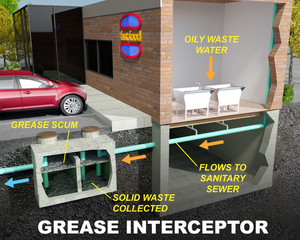Corsi Di Formazione Aziendale helps employees expand their skills and improve their professional performance. It can also prepare workers for leadership roles and other growth opportunities.

A top-rated provider of corporate training services offer customer experience solutions, business consultancy, and more. Its team and has a proven track record of helping businesses reach their full potential.
A nomadic lifestyle offers many benefits, including geographic freedom and the ability to connect with nature. It also provides a chance to experience new cultures and expand one’s knowledge of the world. However, it is important to consider the disadvantages of this type of lifestyle. For example, it may be difficult to build long-term relationships due to frequent relocations. In addition, it can be challenging to maintain a stable source of income. Nevertheless, it is possible to balance a nomadic lifestyle with the rest of life by developing strong time management skills and utilizing digital tools that help keep track of tasks and schedules.
Nomadic is a training service that works with organizations to develop and deliver learning experiences that take advantage of the way adults learn best. Its approach to learning takes a holistic and human-centered perspective that is based on research, observation, and interaction with others. Its founders, Tim and Matt, are both experienced leaders in the learning field. They have a passion for creating learning experiences that are fun and engaging. They have spent more than a decade helping companies like AB InBev and IBM upskill their people for a changing workplace.
In addition to offering corporate training services, Nomadic specializes in developing business simulations. These are hands-on exercises that provide a unique and effective way for employees to learn the fundamentals of leadership and management. The company has several offices around the world and has worked with a wide range of industries.
In recent years, the term “nomadic” has come to be used in a more general sense, referring to anyone who moves from place to place for work or pleasure. It is often used to describe members of itinerant hunter-gatherer tribes, but it can also refer to military personnel who are assigned to foreign countries on four-year rotations or people whose careers require them to travel for work. Nomads usually have a mobile home base and move from location to location using a variety of modes of transportation, including trains, airplanes, boats, and cars. They often have a limited set of possessions, and reevaluate them regularly to remove items that are no longer useful.
AllenComm
AllenComm is a leading digital learning agency that offers a full range of employee training services. These include onboarding, compliance, sales enablement, and leadership training programs. The company has a team of experts who are available to help you create a customized program that will meet your organization’s needs. AllenComm also provides custom eLearning solutions and experiences. Its clients include large companies, small businesses, and universities. AllenComm’s team of experts is committed to providing exceptional service and quality. They work closely with their clients to understand their goals and objectives. They are also flexible and willing to adapt to their client’s needs.
Allen Communication is a digital learning agency with a focus on delivering high-quality, engaging training programs for corporate employees. The company’s employee onboarding, compliance, gamification, and micro learning training programs are designed to improve productivity and engagement. Its clients include manufacturing, healthcare, finance, and consumer goods industries in the United States.
Upskilling is a great way for organizations to keep their workforce current and competitive. This approach enables them to develop a long-term training strategy and build a culture of learning. It can also reduce training costs and improve employee retention. AllenComm has a proven track record of working with organizations to build upskilling programs that produce tangible results aligned with desired organizational goals.
The company’s expert assistance in developing upskilling programs includes assessing existing skill sets with performance mapping, determining areas of improvement, and keeping up with industry trends. In addition, AllenComm’s team works with stakeholders to ensure their voices are heard throughout the process. This allows them to create a successful program that will be beneficial for the organization.
AllenComm’s team consists of a diverse group of professionals, including designers, video editors, writers, project managers, and programmers. Their expertise in eLearning design allows them to provide innovative, scalable, and cost-effective solutions for their clients. They are also highly responsive to feedback and questions. They strive to stay on time and budget, while remaining flexible. They have an excellent reputation in the industry and are trusted by many leading global brands.
Josh Bersin
The $340 billion corporate training industry is enormous, fragmented, and complex. It is challenged by the rapid pace of change in business and technology, as well as by workforce demands for learning and career growth. Companies are struggling to deliver new skills, improve employee retention, and meet the needs of employees who now work from home and in smart-working environments.
This is why it is time for a reinvention of corporate training. The old ways are not working, as we can see from the number of people who are changing jobs or leaving their current employer every year. They can’t see clear career paths within their company, so they leave for a better opportunity elsewhere. The good news is that the right strategy can help.
Josh Bersin is an expert in this area. His research and analysis has helped many companies make better decisions about their learning and development programs. He is a frequent keynote speaker and has authored many books, including Irresistible. In this book, he describes how to create an engaging and effective learning experience that will be irresistible to your employees.
Bersin believes that companies need a more focused and data-driven approach to learning. He also believes that they should focus on building an enterprise capability in learning and capability development, rather than just a collection of tools and content. This approach will allow them to provide more value and achieve greater success in the marketplace.
He says that this is not easy, but it is possible. It will require leadership, investment, and passion. It will also need to be backed by a solid evidence base of what works. In the end, it is all about improving outcomes for the business.
The key to the future of corporate learning is integrating it into the flow of work. This will ensure that it is relevant to the business challenges and the new work environment. In addition, it will allow employees to access the content they need when they need it. This will be a significant shift from the current model of training, which is mostly delivered via video-based chapter-by-chapter courses.
Ever Better
Corporate training services are essential to ensuring that employees have the skills they need to do their jobs. The best corporate training companies can help you create a customized learning path for each employee, based on their skillset and personal goals. In addition, they can help you train your employees to develop new skills and adapt to changing business demands. There are many different types of corporate training programs, from eLearning to on-the-job training.
INTOO’s corporate training solutions expertly weave together personalized coaching, dynamic training courses, and interactive workshops to drive organizational growth. These programs are designed to align with your company’s unique culture and goals, and leverage a state-of-the-art technology platform that offers an extensive suite of learning resources. In addition to traditional corporate training, INTOO also provides leadership development and career guidance tools for managers and executives.
The top corporate training companies are those that offer high-quality services, a comprehensive suite of learning resources, and a tailored approach to developing your employees. A good corporate training service can help you improve your business’s bottom line by boosting productivity and employee retention. The best corporate training programs are tailored to meet the specific needs of your organization, and can be delivered through in-person workshops, virtual sessions, eLearning platforms, or on-the-job training.
A corporate training program can teach employees how to effectively communicate and work with each other. In addition, it can help your team members develop their soft skills, such as conflict resolution and emotional intelligence. These skills are critical in the workplace, especially when working with clients and customers.
Another benefit of a corporate training program is that it can increase your employee’s engagement and motivation. This is important because employee engagement is directly linked to company performance. A well-designed corporate training program can help your employees feel more connected to their work and their colleagues, resulting in higher productivity and morale.








